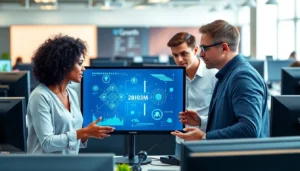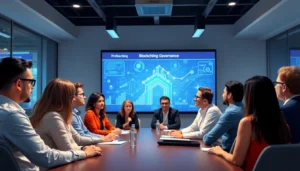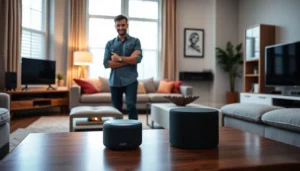Table of Contents
ToggleIn a world overflowing with challenges, creative puzzle solving stands out as a refreshing escape. It’s not just about fitting pieces together; it’s about unleashing the imagination and thinking outside the box. Whether it’s a jigsaw puzzle that seems to have a mind of its own or a riddle that feels like it was written by a mischievous cat, the thrill of cracking these conundrums brings a unique joy.
Imagine transforming frustration into fun with every twist and turn of your brain. Creative puzzle solving isn’t just a pastime; it’s a workout for the mind. It sharpens problem-solving skills while adding a dash of humor to the daily grind. So grab your thinking cap and get ready to dive into a world where creativity meets logic, and every puzzle is an opportunity to showcase your brilliance.
Understanding Creative Puzzle Solving
Creative puzzle solving involves using imaginative strategies to approach and overcome challenges. Engaging in this activity nurtures cognitive flexibility and enhances innovative thinking.
Definition of Creative Puzzle Solving
Creative puzzle solving encompasses various approaches for tackling challenges, ranging from lateral thinking to unconventional methods. It invites solvers to think outside the box while exploring diverse solutions. Jigsaw puzzles, riddles, and brainteasers exemplify this approach as participants integrate creativity and logic. The focus lies not merely on finding answers but embracing the journey and the learning process. Individuals experience growth by exploring different pathways and strategies within puzzles, enriching their problem-solving capabilities.
Importance in Problem-Solving Skills
Creative puzzle solving significantly benefits problem-solving skills. It equips individuals with techniques that enhance analytical thinking, critical for navigating everyday challenges. By tackling puzzles, individuals learn how to break complex problems into smaller, manageable parts. Exposure to various scenarios fosters adaptability in approaching real-life situations. This blend of creativity and logic empowers individuals to devise unique solutions. Moreover, the enjoyable aspect of puzzling encourages persistence and resilience, attributes that differentiate effective problem solvers from others.
Techniques for Enhancing Creative Puzzle Solving

Creative puzzle solving benefits from various techniques that optimize thinking processes. Engaging in different strategies encourages better outcomes and deeper insights.
Divergent Thinking
Divergent thinking fosters creativity by allowing individuals to generate multiple ideas and solutions. This approach promotes the exploration of various perspectives rather than focusing on a singular answer. In puzzle solving, it becomes essential to think broadly and entertain unconventional methods. Techniques include free writing or drawing to visualize thoughts. Allowing ideas to flow without immediate judgment enhances creativity. Practicing this thinking pattern increases cognitive flexibility, which is crucial for tackling complex puzzles.
Brainstorming Strategies
Brainstorming strategies harness collective intelligence to inspire idea generation. Collaborating with others sparks new thoughts and can lead to innovative solutions. Keeping the environment open and non-judgmental encourages everyone to share freely. Using prompts or specific themes can provide direction during sessions. Setting time limits can stimulate fast-paced thinking and prevent over-analysis. Gathering diverse perspectives brings fresh insights into the puzzle-solving process, enriching the overall experience. Incorporating these approaches smooths the path toward effective problem resolution.
Real-World Applications of Creative Puzzle Solving
Creative puzzle solving finds diverse applications across various fields, enhancing skills and approaches in unique ways.
In Education
In educational settings, creative puzzle solving fosters critical thinking among students. Engaging students with puzzles cultivates problem-solving abilities and encourages collaboration. For instance, teachers use logic puzzles to stimulate discussions, pushing students to articulate their reasoning. Activities like escape rooms offer hands-on learning experiences, reinforcing teamwork while making education enjoyable. By integrating puzzles into curricula, educators can foster a love for learning and improve retention rates.
In Business Environments
Within business environments, creative puzzle solving drives innovation and team cohesion. Companies embrace strategic games and problem-solving challenges to boost employee engagement. Such activities promote adaptive thinking, necessary for navigating market complexities. Leaders utilize puzzles during team-building exercises, enhancing collaboration and communication skills among team members. Real-world scenarios often require innovative solutions, making creative approaches essential for success in dynamic industries.
Challenges in Creative Puzzle Solving
Creative puzzle solving presents unique challenges for individuals. These challenges often stem from inherent barriers that can hinder effective problem-solving.
Common Barriers
Many solvers encounter rigid thinking. Rigid perspectives obstruct the ability to view puzzles from multiple angles. Limited experience with diverse puzzle types restricts creativity, leading to frustration. Time constraints often add pressure, causing individuals to rush rather than think critically. Fear of failure, alongside self-doubt, can significantly impact confidence. When issues arise, some may hesitate to collaborate, missing opportunities for collective insight.
Overcoming Obstacles
Effective strategies exist to navigate these hurdles. Practicing expansive thinking encourages individuals to explore unconventional solutions. Seeking feedback fosters an environment where ideas flourish. Taking breaks can refresh the mind, often leading to breakthroughs. Collaborating with others infuses fresh perspectives, enhancing creativity and innovation. Setting aside dedicated time eases pressures associated with tight deadlines, allowing for deeper engagement. Embracing challenges as learning experiences fosters resilience, cultivating a positive attitude toward problem-solving.
Creative puzzle solving opens doors to new ways of thinking and approaching challenges. By engaging with puzzles, individuals not only sharpen their analytical skills but also cultivate a sense of joy and resilience. This practice encourages a mindset that embraces exploration and innovation, essential traits for navigating both personal and professional landscapes.
As individuals face obstacles, the techniques discussed can help them break free from conventional thinking. Embracing creative solutions fosters collaboration and enhances overall problem-solving capabilities. Ultimately, the journey of solving puzzles becomes a rewarding experience that enriches lives and inspires continuous growth.




